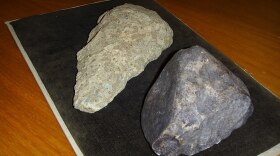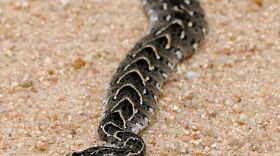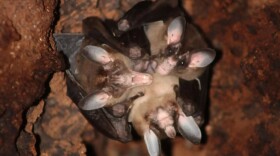-
The Best of Our Knowledge explores topics on learning, education, and research.This week we’ll celebrate the best of The Best of Our Knowledge in 2025.We’ll learn about a new color that humans normally can’t see, a project that created one of the most advanced maps of the brain, and research that uncovers truths to the extinction of the dinosaurs.
-
The Best of Our Knowledge explores topics on learning, education, and research.On this episode, we’ll learn how an endangered antelope was born to a mother of a separate species.A new report from New York examines declining public-school enrollment.And lawmakers are celebrating the return of whole milk to the cafeteria.
-
The Best of Our Knowledge explores topics on learning, education, and research.Can you imagine early humans over 2 million years ago using tools, maybe not, but guess what they did!Technology has been a major part in our evolution as humans and stone tools were some of the beginnings of what we recognize as modern technology.We will explore a discovery of stone tools found in Kenya’s Turkana Basin to learn more about early technology and humans.
-
The Best of Our Knowledge explores topics on learning, education, and research.There are about 600 venomous snake species worldwide and I hope you never run into one.A new study looks into how some venomous snakes attack their prey.Vipers, Elapids, and Colubrids all have different behaviors when striking and we will learn all about it.
-
The Best of Our Knowledge explores topics on learning, education, and research.We learn about fossils of dinosaurs found in New Mexico that provides evidence that they were quite diverse and thriving before their extinction.And we learn about a series of forums looking at what challenges rural schools are facing in New York State.
-
The Best of Our Knowledge explores topics on learning, education, and research.The sun is the center of our solar system and our source of almost all energy.The space probe Solar Orbiter has been able to identify the Sun’s dual engines for fast electrons, explosive flares and coronal mass ejections.Being able to collect this data researchers have uncovered the key mysteries about these sun particles.
-
The Best of Our Knowledge explores topics on learning, education, and research.Ever thought about wanting to change the shape of your head, well peoples in Latin America did thousands of years ago.This practice is called head-binding and was done on newborns, when their heads are pliable, to have the desired form of being flat, round, or cone shaped.We learn all about head binding and the cultural significance of it all.
-
The Best of Our Knowledge explores topics on learning, education, and research.Seahorses are some of the most unique and beautiful creatures in the ocean.The Pygmy Seahorse is one of the most interesting looking and complex of them all.They are only 1 inch big, and due to their size were not known to exist until about 50 years ago.We will learn all about this tiny creature that comes from the depths of the ocean hidden in coral.
-
The Best of Our Knowledge explores topics on learning, education, and research.A monster Molecular Cloud has been discovered in our galaxy that was not previously known to exist by a team of astronomers.This cloud is made up of gas and dust and is about 200 light years long... whoa that is indeed a monster.We will learn more about this cloud and what exactly it is and its functions.
-
The Best of Our Knowledge explores topics on learning, education, and research.Vampire Bats… not really an inviting name, but new research discovers that these bats have behaviors of cuddling, playing, sharing, and moreAnd we also learn about an ancient voyage recreation that happened thousands of years ago across one of the strongest ocean currents in the world by a team of researchers.
-
The Best of Our Knowledge explores topics on learning, education, and research.At Yellowstone National Park about 5,000 Migratory Bison roam and graze the grasslands.In new research it hints that these Bison are actually helping the environment with their grazing habits.This means that there are potential benefits to restoring Bison to an ecosystem.
-
The Nation’s Report Card shows a drop in average scores for eighth graders in science and for 12th graders in math and reading.And liberal arts colleges are going through a challenging time, but one private college in Massachusetts is "reimagining" education.
















